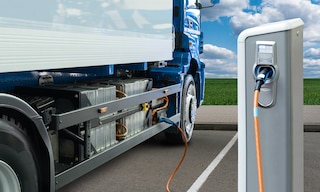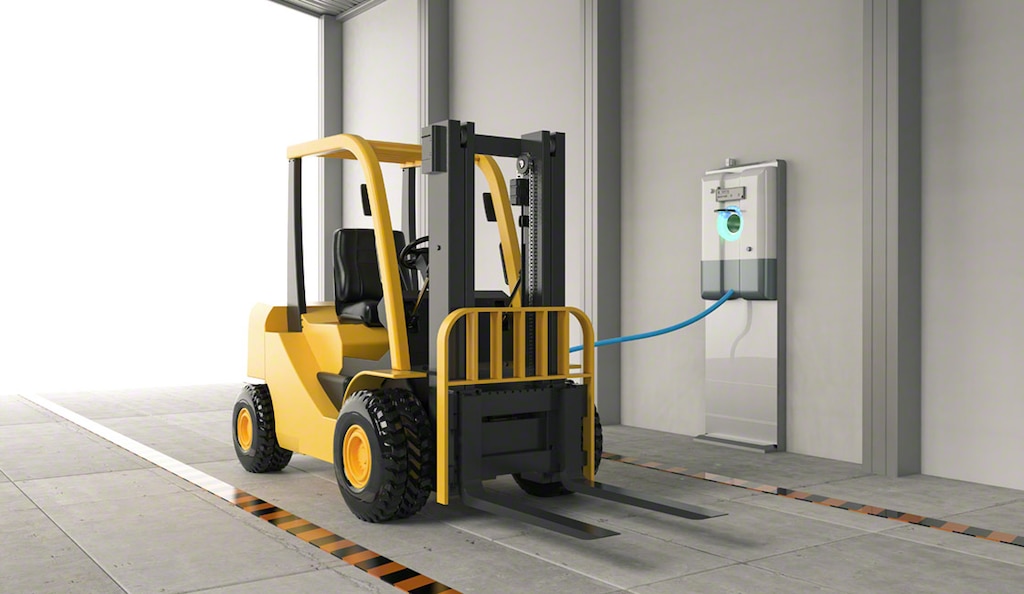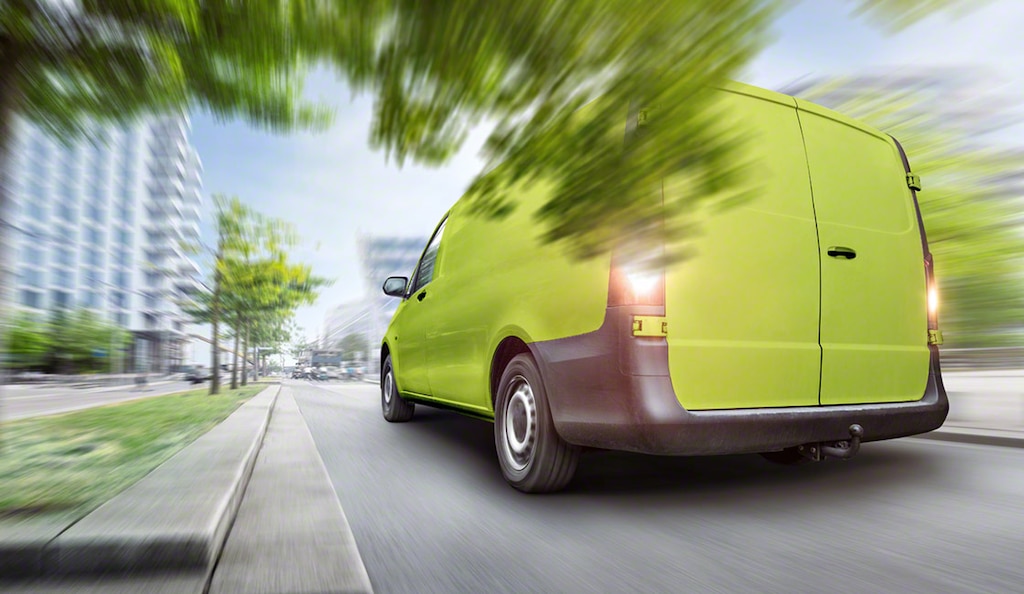
Electric vehicles in logistics and freight transportation
Electric vehicles are revolutionizing the logistics industry. They offer a range of both economic and environmental benefits to the supply chains of companies that employ them.
What is an electric vehicle?
An electric vehicle (EV) is a type of car driven by one or more electric motors for propulsion instead of an internal combustion engine (ICE) that burns fossil fuels like gasoline or diesel.
There are several types of electric vehicles, such as battery (BEV), hybrid (HEV), plug-in hybrid (PHEV), and fuel cell (FCEV).
How does the logistics industry use EVs?
The supply chain overall and the logistics industry, in particular, are incorporating electric vehicles for a broad range of applications.
- Urban distribution. Electric vans and trucks carry out last-mile delivery in cities. These vehicles are ideal for home deliveries, parcel distribution, and courier services in low-emission zones.
- Storage and internal transport. Warehouses and distribution centers (DCs) employ forklifts and other electric vehicles to handle materials. They are quiet and emit no exhaust gases, improving working conditions for associates. An example is autonomous mobile robots (AMRs).
- Heavy cargo transportation. Long-distance electric trucks are on the rise and are already starting to transport goods between DCs and along the supply chain. However, they still face challenges related to range and charging infrastructure.
- Commercial fleets. Courier and parcel companies are electrifying their fleets to bring down operating costs, minimize carbon emissions, and comply with environmental regulations.

Benefits of electric vehicles in logistics
Integrating EVs into the supply chain brings numerous advantages. These range from lowering operational expenses to improving environmental sustainability and public health.
- Reduced emissions. Electric vehicles do not emit greenhouse gases while operating, limiting the carbon footprint of logistics operations.
- Energy efficiency. Electric motors are more efficient than ICEs because they convert more battery energy into motion.
- Lower operating costs. EVs have fewer moving parts than ICE vehicles, cutting down on maintenance costs. Likewise, electricity is typically cheaper than fossil fuels.
- Regulatory compliance. Many cities are implementing low-emission zones and restrictions for polluting vehicles. EVs enable companies to comply with these regulations and avoid fines.
- Technological innovations. Integrating EVs into the supply chain drives advancements in related technologies, such as telemetry, fleet management, and smart charging systems.
- Improved public health. Decreased vehicle emissions enhance air quality, which can positively impact public health, especially in densely populated urban areas.

What is the logistical problem with electric vehicles?
Although electric vehicles have multiple advantages for the supply chain, they must overcome certain obstacles to maximize their effectiveness and efficiency.
- Infrastructure and charging time. The absence of a robust and widely distributed network of charging stations can hinder the adoption and effective use of electric vehicles for logistics operations. Moreover, despite advancements in fast-charging technology, charging an EV can take longer than refueling a gas tank, potentially impacting operational efficiency.
- Range. EVs generally have lower mileage than ICE vehicles. This could pose a problem for long-distance routes, where careful planning is critical to avoid running out of charge. The good news is that battery technologies are improving by the day.
- Initial outlay. EV purchasing costs are higher than those of traditional vehicles. However, their operating costs are lower, and governmental subsidies can offset the difference.
- Battery weight. EV batteries are heavy, which could limit a vehicle’s payload capacity. This is particularly significant for trucks and delivery vans, where maximizing payload is crucial for operational efficiency.
- Route planning challenges. Route planning for EVs must account for charging station availability and the vehicle’s range. This can complicate logistics processes and require advanced software to optimize routes.
Examples of electric vehicles in logistics
The use of electric vehicles in the supply chain and logistics is growing rapidly worldwide. Many leading businesses are adopting this technology to enhance sustainability and operational efficiency.
- DHL. The German logistics company aims to electrify more than 66% of its last-mile delivery fleet by 2030. Additionally, DHL has opened its first Electric Vehicle Center of Excellence in the US (Florida) “to support companies from the auto-mobility industry in their electrification journey.”
- UPS. The parcel delivery company is introducing over 100 new electric vehicles in Paris (France), with 600 planned to be operational by the end of 2024.
- FedEx. The business is leveraging technology to move closer towards its goal of an all-electric pickup and delivery fleet by 2040.
Upgrade your logistics operations with electric vehicles
The logistics industry is undergoing a profound transformation with the incorporation of electric vehicles. Although there are certain drawbacks, the benefits in terms of sustainability, reduced operational costs, and regulatory compliance make EVs an attractive option for businesses. With continuously improved charging infrastructure and battery technology, we’ll most likely see an increase in the implementation of EVs in logistics worldwide in the coming years.
Are you looking to leverage the latest technologies to boost your business? You’ve come to the right place. At Interlake Mecalux, we specialize in automated solutions and their supervision with our Easy WMS warehouse management system. Be sure to contact us. Together, we’ll take your logistics processes to the next level.
